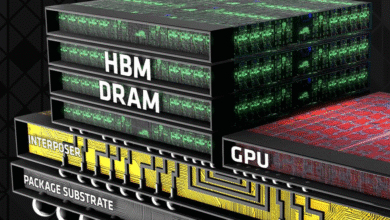Part 4: Key Players in the Semiconductor Industry

Welcome back to our semiconductor quick-read series! So far, we’ve journeyed through the basics of semiconductors, their manufacturing process, and the innovative technologies shaping the industry. Now, it’s time to meet the movers and shakers – the companies that are driving this fascinating field forward.
The Industry Giants: Who’s Who
When it comes to semiconductors, some names stand out as giants in the landscape. Companies like Intel and AMD have been household names for decades. Intel, with its long history of innovation in CPU technology, has been at the forefront of making the processors that power our computers. AMD, on the other hand, has been giving Intel a run for its money with its high-performance Ryzen and EPYC series, proving that competition drives innovation.
Then there’s TSMC and Samsung, two powerhouses in semiconductor manufacturing. TSMC, based in Taiwan, is a giant in semiconductor foundries, providing the manufacturing muscle behind many of the world’s top chip designs. Samsung, with its vast resources and expertise, is not only a major player in memory chips but also a key competitor to TSMC in the foundry business.
Qualcomm and MediaTek are the go-to companies for mobile communications chips. Qualcomm’s Snapdragon series has become synonymous with powerful smartphone performance, while MediaTek offers a range of chips that power everything from budget to mid-range smartphones, making them a crucial player in the mobile ecosystem.
NVIDIA has made a name for itself in the GPU space. Its graphics processing units have long been the choice for gamers and professionals needing serious graphical horsepower. But NVIDIA’s reach goes beyond gaming; its chips are now powering AI and data centers, showing just how versatile semiconductor technology can be.
Fabless companies and foundries: A partnership built on specialization
The semiconductor industry has evolved into a complex web of specialized roles, with fabless companies and foundries playing pivotal parts. Fabless companies like NVIDIA and Qualcomm focus on the design side of things. They come up with the innovative architectures and designs for chips but leave the actual manufacturing to others.
Foundries, like TSMC and Samsung, are the ones with the massive, high-tech factories (fabs) where the chips are made. This division of labor allows each party to focus on what they do best. Fabless companies can pour their resources into research and design, while foundries can perfect the manufacturing process and economies of scale. It’s a partnership that has propelled the industry forward at a rapid pace.
Semiconductor equipment and materials suppliers: The unsung heroes
Behind the scenes, there’s a host of companies supplying the equipment and materials that make semiconductor manufacturing possible. ASML, for example, is a key player in the lithography equipment space, providing the advanced machines needed for techniques like EUV lithography. Without their precision-engineered equipment, the tiny patterns on modern chips simply couldn’t be made.
Materials suppliers are equally important. They provide the high-purity silicon, chemicals for etching and doping, and the specialized gases used in various manufacturing processes. These suppliers form the backbone of the industry, ensuring that the right materials are available to meet the exacting standards of semiconductor production.
In our final post, we’ll look to the future. We’ll explore the market trends that are shaping the semiconductor industry and what opportunities and challenges lie ahead. Don’t miss it!
- Introductory post
- Part 1: Semiconductor Basics
- Part 2: The Making of Magic – Semiconductor Manufacturing Process
- Part 3: Core Technologies and Trends in the Semiconductor Industry
- Part 4: Key Players in the Semiconductor Industry
- Part 5: Market Trends and Future Outlook


